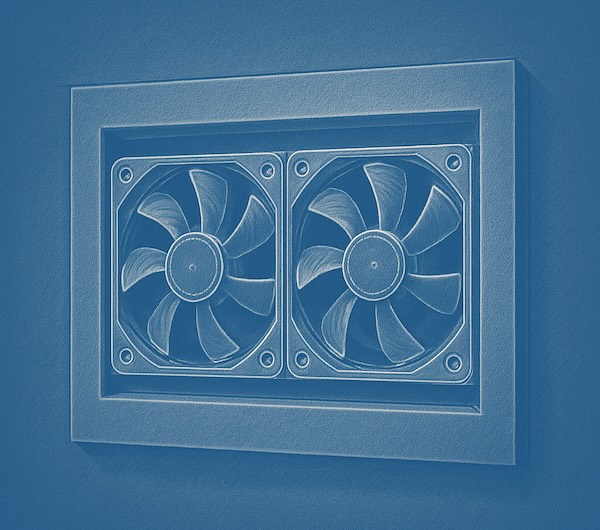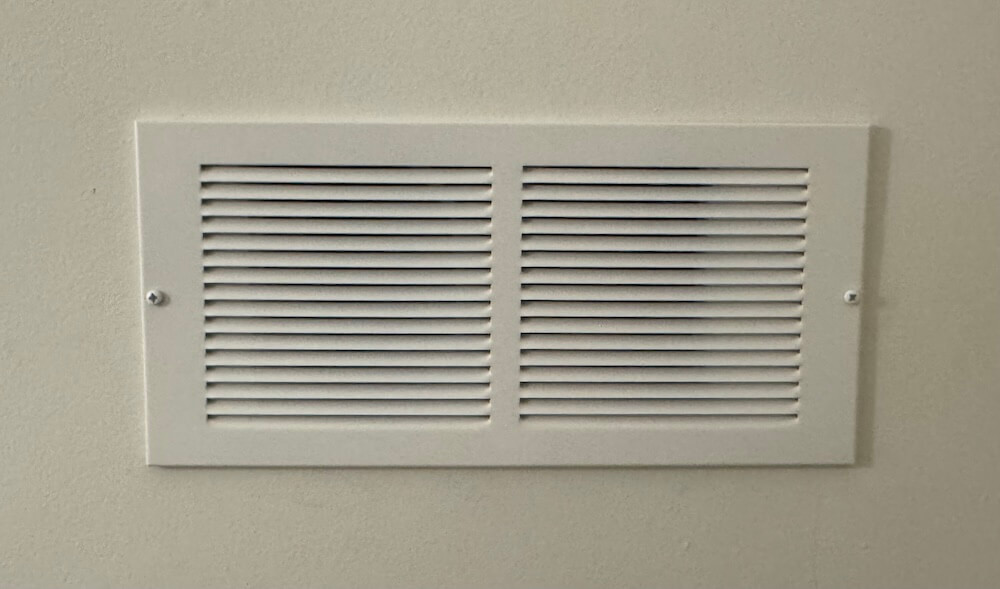Using In-Wall Computer Fans For Home Air Movement

I live in a lovely century-old home in Toronto, but that means we don't have central air. We've retrofitted an efficient heat pump system, which has enough power to cool/heat the house. However, not every room has a cassette, and the rooms without can be much too hot or much too cold.
Placing a fan near those doors quickly confirmed it was just an airflow problem, but who wants a fan sitting on the floor 24/7? So I set out to solve this.
At first, I looked for purpose-made through-wall fans to solve this problem. They exist, but they have a whole host of problems:
- Too loud: even the quietest models were 46db, which would be an annoying source of continuous background noise.
- Ugly: I couldn't find any that aren't total eyesores
- Wiring: Requires running 110v mains wiring to them which, technically, requires an electrician
- Low throughput: these fans didn't push much air, less than 100 CFM
- Designed for burst usage, like clearing a bathroom after a shower, not continuous operation. I worry they would fail if left on for hours per day.
I almost gave up, but then I remembered computer fans. Nerds have been optimizing computer case fans for years, trying to get high airflow with near silent fans. Some quick research revealed these could work:
- Quiet: computer fans were much quieter, about 20-24db which is nearly inaudible. They have a range of features to help sound: anti-vibration mounts, low noise adapters (really just a resistor that drops RPM).
- Manageable aesthetics: I can buy any grill/cover to cover these.
- Throughput: ~80 CFM each which is similar to the through-wall fans, but they are designed to be installed side-by-side which opens the option of installing several behind a single grill.
- Designed to be run continuously, for a decade or more.
- Easy wiring: at 12V, a simple plug-in adapter is all you need. Installing near the floor near existing plugs made this easy.
For my test install, I ended up with a pair of Noctua NF-A14 fans, a 12V adapter from my cable box, and some basic vent covers from Home Depot. At only 2.5cm deep, there was plenty of room to mount them inside the wall cavity.
The result: the problem was instantly solved. The room, which was previously about 4 degrees hotter than the rest of the house, dropped to within 0.2 degrees of the rest of the house and stayed there.
My only regret: I didn't add an RGB rainbow effect.
